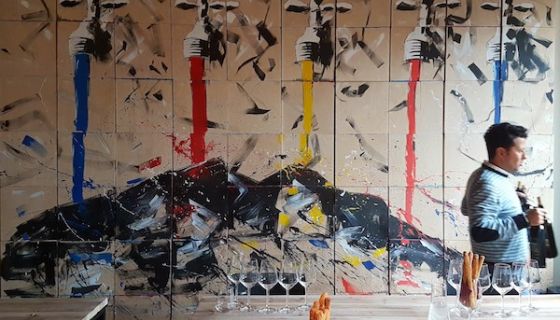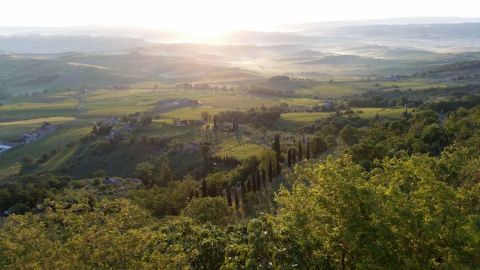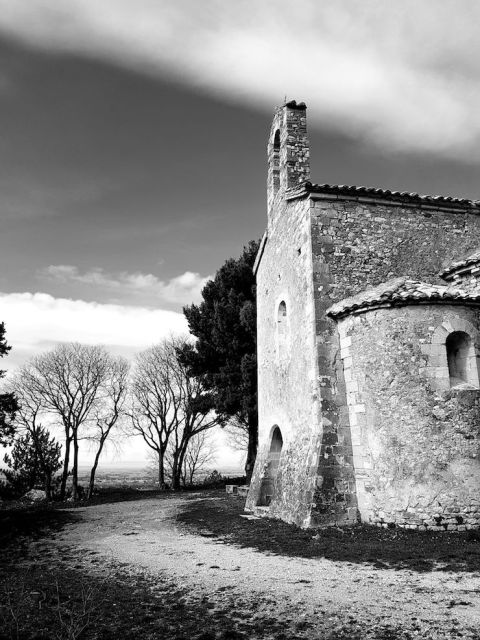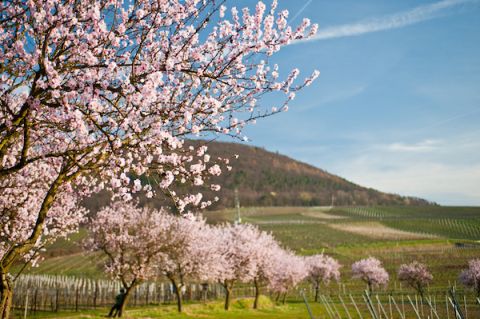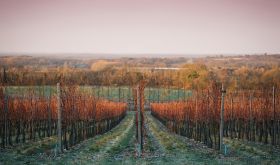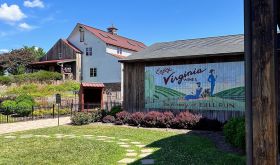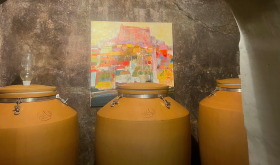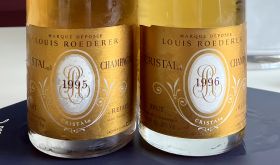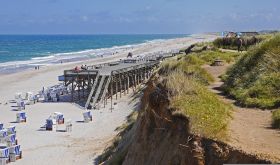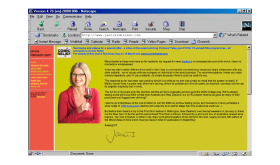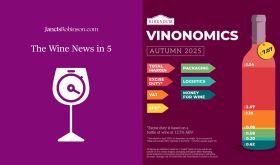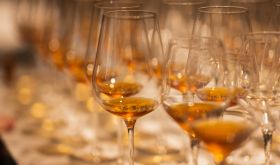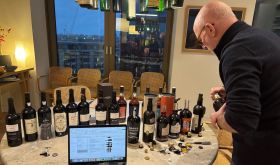12 August 2021 Hopeful that international travel restrictions will continue to be eased, we’re republishing Jonathan Reeve’s invaluable guide to being a wine tourist.
19 July 2021 On so-called Freedom Day in England, when wine lovers might just start to dream about travelling, Jonathan Reeve offers some very practical tips, illustrated with his own pretty mouth-watering pictures. He is a keen wine lover and, until coronavirus, traveller. Now at Liv-ex, he has previously worked for Wine-Searcher and Wine Owners. This is the tasting table at Benanti in Sicily.
‘Wine’ and ‘holiday’ are possibly the two best words in the English language, whichever order they’re in. Combine them, and you have a recipe for bliss. Arranging a wine holiday comes with a few complexities and questions, however, including:
- Is it best to find accommodation on a vineyard or in a nearby town?
- Do I have to buy a bottle of wine when I visit a winery?
- What time of year is best to visit wineries?
To help budding wine tourists, here are some top tips from my personal and professional experience of wine travel.
Less is more
Tempting as it is to cram in as many tastings as possible, this can be counterproductive. An over-packed schedule creates stress and reduces relaxation time – the opposite of what we want from wine and holidays. I once made this mistake in Sicily. It was a stunning trip, but too hectic. ‘FOMO’ led to over-commitment and driving thousands of kilometres to and fro, rarely stopping to relax and absorb the chilled Sicilian vibe.
With a shorter, more-focused itinerary, you’ll be able to better communicate with each winery you select. Make a point of telling them that they’re among your chosen few. They will feel respected and valued by your deciding to commit your special holiday time to them, their region and their wines, so they may well commit more of their valuable time to you. This can never hurt!
Book ahead
Once you’ve decided where you most want to tour and taste, it’s advisable (and respectful) to contact the winery in advance. Most wineries have a website with at least an email address or telephone number, so a quick Google search will get you started. All that’s needed is a brief email requesting a visit (specify which dates work for you, and how many people will be with you). Ideally, get visits arranged several weeks ahead, particularly during busy times like midsummer or during harvest. This is all particularly true for smaller wineries, which won’t have staff dedicated to tours and tastings, and will have to take staff away from other important duties.
Early bird
Arriving well before a tasting does far more than just avoiding the embarrassment of being late. It also creates time to notice the landscape, get a breath of local air, and maybe a bite to eat somewhere nearby. This all adds to the context of the place, and to the memories you’ll take away from the experience. It also provides talking points for conversation with your host, allowing them to engage better with you. Getting up early has additional benefits; below is dawn as seen from a hilltop hotel room in Montalcino.
And talking of early…
Morning is the best time to taste wine. Many wineries open at 10 am, so start your visits then, to make the most of your day (breakfast is also more exciting knowing that the hotel strawberry jam will soon give way to a jammy local red). Starting early creates time after the first tasting to explore the local village and/or vineyards, and firm up lunch plans.
Now, lunch is an area where communicating really helps…
Word of mouth
Ask for restaurant recommendations from other wine travellers, from this site’s forum (and of course Nick Lander’s articles) as well as from the wineries you visit. You can spend aeons analysing and second-guessing Tripadvisor restaurant reviews, but nothing beats a recommendation from someone in the know.
From them, to me, to you – three excellent word-of-mouth recommendations from one of my favourite wine-travel destinations, Italy*:
- Re di Macchia, Montalcino. Recommended by brilliant Brunello producerers Katia and Gigi of San Polino. (Katia has written several excellent articles for this site, notably about biodynamics and coronavirus.) Treat yourself to boar ragù, banter with the brothers who own the place, and then stroll happily home along the cobbled streets of Montalcino.
- Ristorante Majore, Chiaramonte, Sicily. Recommended by the team at COS. The tagliatelle with yellow boletus mushrooms is phenomenal. This proved a last-minute gem that we would never have encountered without a local recommendation.
- Osteria Vini e Vecchi Sapori, Florence. Recommended by Giacomo Panicacci of Tenute Piccini, my friend and colleague from Wine-Searcher days. The pollo fritto con fiori di zuccha (fried chicken with courgette flowers) is perfect after a day of Tuscan wine touring. The small restaurant is located alongside the Piazza della Signoria with its statue of David.
*Other wine-producing countries are available. Check this site’s travel forum.
Exercise!
Plan some walking and exploring in between tastings. This is an all-round good idea; better health, less driving, greater cultural diversity. Once your holiday is off to a gastronomic start, your body will be grateful for some exercise. What better way to earn your next meal or tasting, and see the local vineyards along the way? Exploring the place on foot also brings better photo opportunities, such as for my image below of the chapel at St-Cosme, Gigondas.
Paid tours and tastings
Some tours and tastings are free, some aren’t. In 2007 I spent three happy months hosting paid vineyard and winery tours at Errázuriz’s beautiful Don Maximiano estate in Chile’s Aconcagua. If you’re paying, obviously you have the right to expect a certain level of service. Disappointments do happen, but they’re relatively rare – it’s in the winery’s interests to impress you. As with unpaid tastings, be super-nice and you might get to see behind a few otherwise-closed doors, or corks.
The write balance
Neatly jotted notes provide a great lasting memory of your visit, plus a reminder of which wines you liked most and might want to buy. But don’t feel pressure to write; your hosts won’t be insulted if you don’t write gushing tomes about each of their wines. And if your nose is permanently buried in your notebook, you’re probably not paying proper attention to the people and the place you’ve travelled all that way to see. Don’t forget that professionals spend their lives writing comprehensive notes and scores for you to use (some of the finest right here on this site), so all you really need to jot down are some basic thoughts and preferences. As for your hosts, their main hope is that you’ll enjoy the wines, tell everyone back home about them, and then order some.
Which brings us to the thorniest question of wine tourism…
To buy, or not to buy
Should you buy a bottle when visiting a winery? It depends. If you paid for the tour, no need. If not, then the most important thing is to be respectful. Wineries understand that buying bottles abroad is impractical, so if you aren’t able to lug bottles around, at least ask the winery staff where their wines are available in your home country. Alternatively, they may sell something else you could buy and bring home. The Priorat-grape-derived cosmetics I once bought at Clos Mogador are a great example.
Find out whether the winery does good food. Eating at the winery neatly solves the ‘should I buy a bottle?’ problem, by immediately creating a way for you to buy something, and also adding to the overall experience of your visit there. It also reduces rush, creates time to better experience the environment, and places the wines in the all-important context of a meal.
Accommodation
Where’s the best place to stay on a wine holiday? Vineyard or village? Staying in a village or town puts you closer to restaurants and bars serving local wine and food, but the challenge is finding urban accommodation with a good vineyard view (if that’s what you’re after). Staying on vineyards gives a more immersive experience – the vineyard views are right outside the door – but vineyards are often located some distance away from local eateries. Top tip: to see what your destinations really look like on the ground, use the street view and 3D topographic imaging features available through Google Maps and Google Earth.
Seasoned traveller
Which time of year is best for wine tourism? Spring is great for travelling to wine regions; everything is fresher and brighter than in the autumn (winemakers included!) and accommodation is generally cheaper than in high summer season. The previous season’s wines will be settling down in their barrels or tanks, and might even be available to sample. My picture below shows just how stunning springtime can be in the Pfalz when the almond blossoms are out.
Summer is the obvious holiday time, and wine regions certainly shimmer with dramatic atmosphere in the heat of midsummer. But be prepared for peak prices, busier roads, more tourists. Vines will be verdant and grapes will be formed, but won’t yet have taken on their final colouration.
Autumn may seem like the perfect time to visit – beautiful colours, ripening grapes, bubbling ferments – but harvest is exactly when winery staff have least time to spare for you (they’re knee-deep in grapes, juice and fermenting wine). Sean Spratt of Destiny Bay on Waiheke Island, New Zealand, warns, ‘During harvest it’s hard to host personally and give visitors the best attention. Unless they’re willing to come out into the vineyard and help pick, of course!’ Duncan Shouler of Giesen in Marlborough echoes this. ‘It’s great to show visitors the real side of winemaking if we can make time. Just be aware that if we roll the red carpet out it’s likely to be sticky with grape juice.’ If travelling in autumn, plan ahead and be patient.
Winter wine travel can be difficult because many wineries have traditionally been closed to guests over winter. But wine tourism is fast becoming a year-round activity, and winter wine tourism has some unique benefits. My wintry week in Alsace in 2010 created wonderful memories such as the bracing walk from Eguisheim to Turckheim one frosty morning, followed by a rustic lunch of Munster cheese and Gewurztraminer among the frosty vine rows of the Hengst Grand Cru. Few wineries were open to visitors, but this was balanced out by the lack of other tourists, the excuse to indulge in local cuisine all the more, and the stunning views. Seeing vineyards covered in snow has a magical appeal all of its own.
Relax and enjoy it all
Simple as that. Never forget the point of wine, and holidays.

